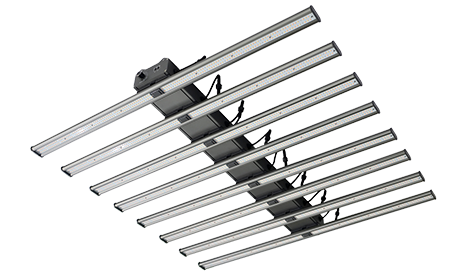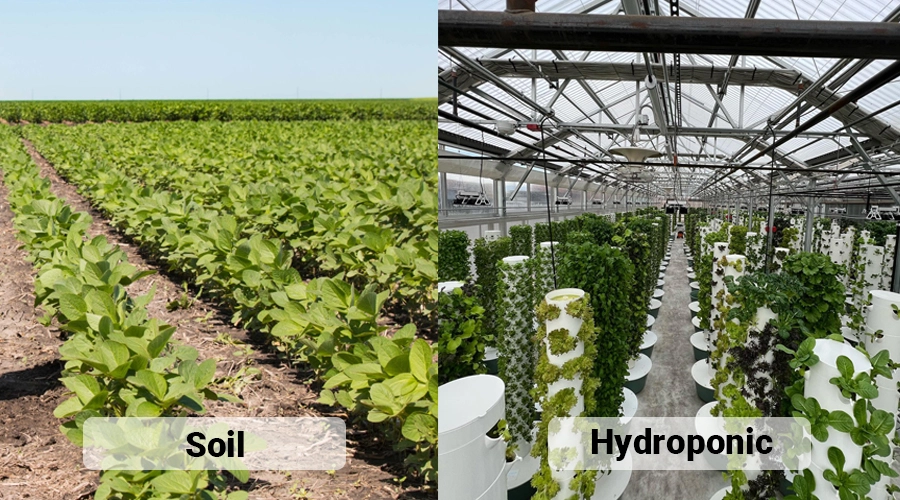Choosing the right wattage for LED grow lights is a complex and important issue. Naturally, you will ask the following questions.
- How many watts does an LED grow light need?
- What watt led grow light do I need?
- How many watts per weed plant?
But these problems should not stop your planting plan.
In this article, we will learn: the range of wattages typically used in LED plant lights, how to determine the wattage of LEDs needed for a specific plant, and how to calculate the wattage of LEDs needed per square foot based on the planting area.
We believe these tips will help you overcome your confusion and restart a successful indoor growing program.
What Does Wattage Mean in LED Grow Lights?
Are you looking to choose your indoor LED grow lights based on wattage? But do you understand what is the meaning of the wattage of plant lights?
In fact, it is the unit of measurement for energy use.
Wattage is not used as a measure of output, but rather as a measure of the energy consumed to illuminate a plant. That is a simple measure of how much energy a light requires to light.
Wattage can only be used as an easy way to estimate the correct light fixture size for your planting.
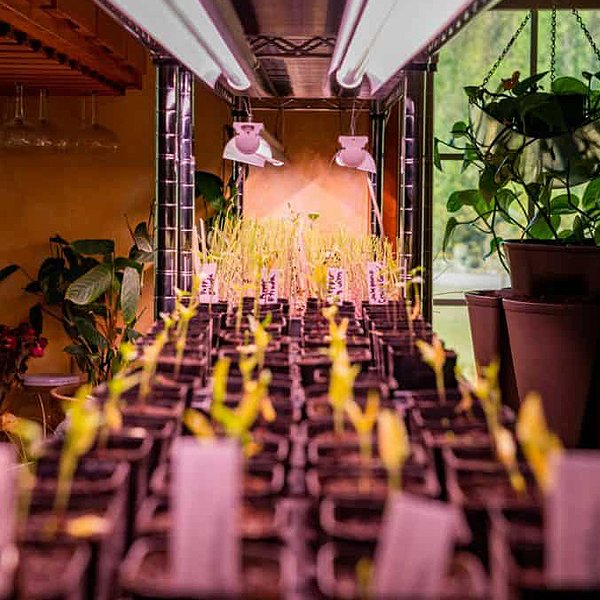
Best Wattage for Grow Lights
There is no best wattage, only the most fitting wattage.
A 150W grow LED light doesn’t provide enough illumination for cannabis, just as an 800W LED plant light isn’t suitable for succulents.
It’s not scientific to just choose the best wattage LED light. Each plant has different needs.
We need to determine the wattage required based on the size of the planting, and the type of plant.
- 80-150 watts: LED grow lights in this range have weak illumination to meet the lighting needs of indoor plants for fill light, home growing, and low light plants.
- 200-350 watts: LED grow lights in this range can meet the light needs of many plants for normal growth.
- 400 watts and above: These high-wattage LED grow lights have very strong illumination and can meet the lighting requirements of most high-light plants.
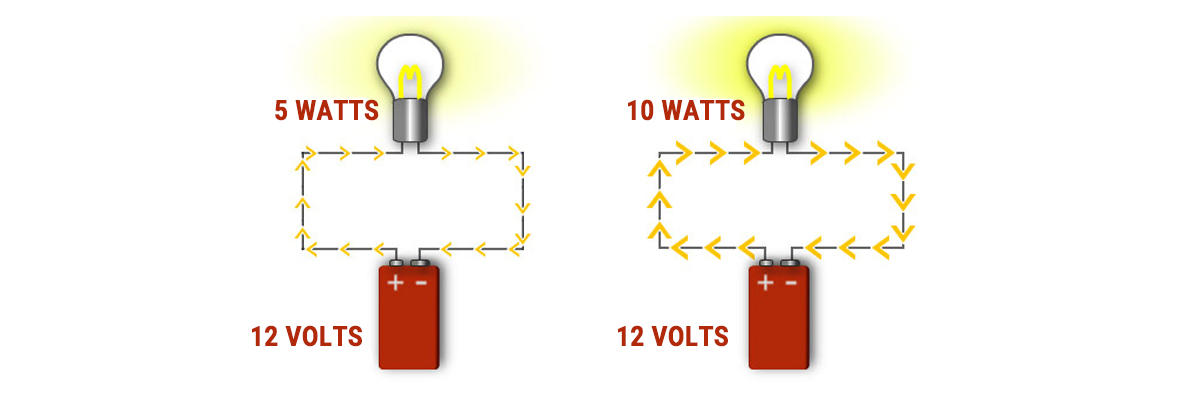
Are Higher Watt LED Grow Lights Better?
When choosing a LED grow light is not better to have a higher wattage, but to choose the right one that matches the photosynthetic light intensity of the plant.
As mentioned above, 150-watt LED plant lights do not match cannabis growth, and the job of an 800W LED grow light is unworthy of succulent growth.
Not the higher the wattage, the better, but to find the most “exact” LED wattage.
Only in this way we make the most of our limited resources and provide the ideal lighting conditions for different plants.
In fact, the intensity of light is related to the power of the grow lamp. The higher the wattage of the plant light means that it has a higher light intensity.
As we know, plants cannot grow without photosynthesis, which is affected by various conditions such as temperature, carbon dioxide concentration, and light intensity.
When all other conditions are met, the light intensity is not up to the standard, which will also affect photosynthesis.
If all other conditions are not met, then photosynthesis will not be enhanced again when the light intensity is increased to a certain level.
What Wattage Should I Use for Indoor Plants?
There are several major factors that determine the right wattage of LED grow lights.
Planting area and plant density
The larger the area and density, the higher the light intensity required, and the greater the wattage required. And for the same area, different plants have different densities and require different wattage.
Types of plants
High-light plants (tomatoes, peppers) and low-light plants (basil, lettuce) both require different amounts of light.
Growth stages
Seedlings, nutritional stages, flowering, and fruiting all require different amounts of light.
Space size and power capacity limitations
Some limited spaces are difficult to accommodate particularly high-wattage LED grow lights. Power supply capacity also limits the maximum wattage that can be used.

Case Study
The choice of LED grow light wattage depends heavily on the type and area of the planting. Let’s take a look at these two examples.
Growing Tomatoes at Home
Tomatoes are high-light plants, which have a large leaf area.
With a planting area of 4 square meters, 150W LED plant lights are sufficient to provide:
Sufficient intensity. 100 to 150 μmol/m2/s is required for normal tomato growth. 150-watt lamps can provide illumination levels in excess of 200 μmol/m2/s.
Appropriate spectrum. Tomatoes absorb red and blue light at similar rates. 150 watts of full spectrum plant light is sufficient.
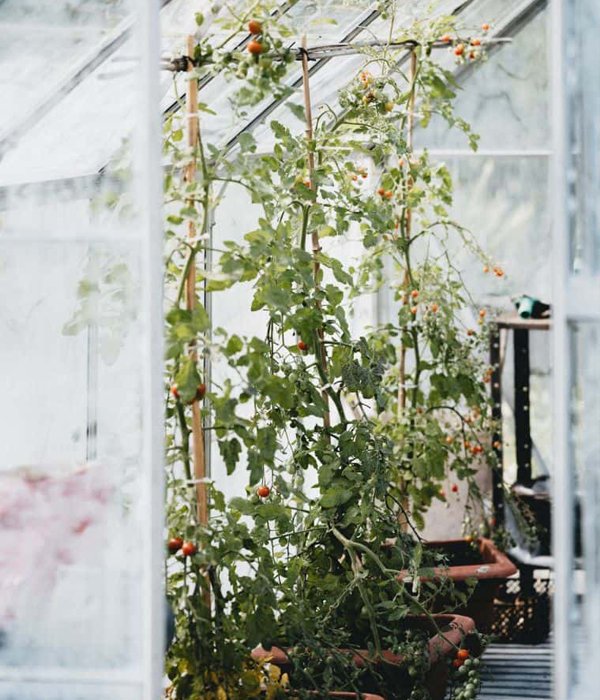
Cannabis Seedlings
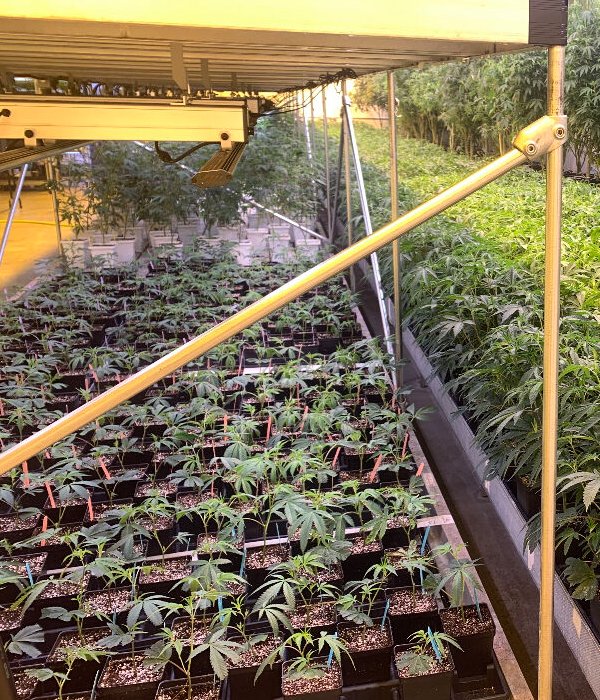
The light requirement of cannabis is much higher than the average plant, it needs 300 to 500 μmol/m2/s of strong light intensity.
A planting area of 20 square meters requires:
At least 2 x 800-watt full-spectrum LED lights to provide high illumination of 500~800 μmol/m2/s.
Two to three 350-500 watt mixed lamps supplement the right amount of blue light to maintain leaf greening. Otherwise, if you use a special adjustable spectrum LED grow light, there is no need to add additional lights.
Small Summary
Growers need to be flexible in choosing the right LED wattage according to the plant type and planting area.
High wattage is not always the best, and a comprehensive estimate of cost and benefit is needed.
The best LED lighting solution is found only through experimentation and adjustment.
How Many Watts Per Square Foot for LED Grow Lights?
Generally, the average power of LED grow lights is about 32 watts for covering a 1 square foot blooming area (although this also depends on the plant, so we are taking averages here).
By contrast, HID lights deliver 40 watts per square foot (assuming an area of 5′ x 5′, or a coverage area of 25 square feet).
Using HID lights on a 4’x4′ area would result in 62.5 watts per square foot of power coverage.
By using LED grow lights instead of HID lights, growers can save approximately 38% in energy.
These energy savings only take into account the savings that growers gain when using LED plant lights. It does not take into understanding other environmental factors where the grower can save energy.
For example, less ventilation and air conditioning may be used, or forgone altogether, depending on the size of the setup and ambient temperature. In some cases, the total savings may exceed 50%.
How Many Plants Can You Grow with A 300W LED Light?
300W can cover an area of about 2*3ft. Generally speaking, you need at least 1 sqft of space for each cannabis plant you grow. In this way, at 300W, you can grow 1-6 seedlings.
As time grows, a 300W LED plant light may only hold 1-2 plants.
It may not be enough to cover a larger space for growing multiple plants.
How Many Plants Can I Grow Under A 600 Watt LED Light?
A good rule of thumb when growing cannabis is to use at least 50-watt of light per square foot of growing space.
We need to calculate the square footage (length x width) of the growing space. We then multiply this number by 50w to get the rough light power we need.
Like, I have a growing space that is 4 feet long and 3 feet wide. This gives me 12 square feet (4 feet x 3 feet) of growing space. I multiply this number by 50w to get 600w. So, I need a minimum of 600 watts of LED grow light.
The following pictures are for your reference.
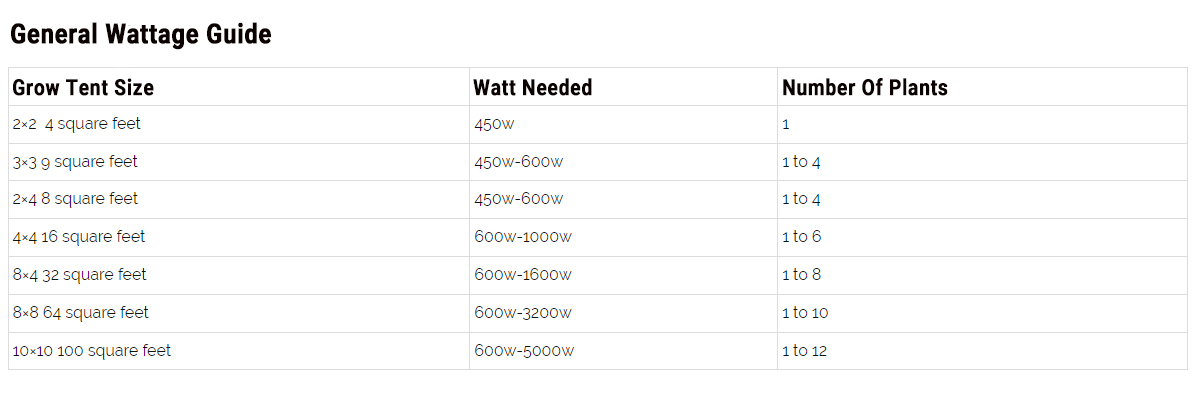
How Much Electricity Do LED Grow Lights Use?
You already know something about the wattage aspect of plant lights, but have you ever thought about this issue of its power consumption?
Let’s continue to explore the energy consumption of plant grow lights.
The amount of power used by a plant light depends on the wattage of the plant light you are using and the number of hours the light runs per day.
Assuming a 600W plant grow light runs 16 hours per day, let’s take a look at the 600-watt grow light electric bill.
Electricity consumption can be calculated as follows:
Daily electricity consumption = Power x Time
Power = 600W, Time = 16 hours
Then the average daily energy consumption of a 600-watt LED grow light = 0.6 kWh x 16 = 9.6 kWh.
The average U.S. electricity price in 2022 is the equivalent of $0.1375 per kWh.
For a U.S. grower, the daily cost of plant lighting is 9.6 x 0.1375 = $1.32.
The average price of electricity in the UK in 2022 is 28 pence per kWh, equivalent to £0.28 per kWh.
And for UK residents, it’s 9.6 x 0.28 = 2.688 pounds per day.
According to Electricity New Zealand, the average electricity price for residential customers in 2022 will be approximately NZ$0.29/kWh.
Daily electricity cost = 9.6 kWh x NZ$0.29/kWh = NZ$2.784/day
Typically, a weed plant needs 14-16 hours of light per day.
Now, you should know that the wattage of your grow lights purely determines the amount of electricity you use. A higher wattage will lead to greater power consumption.
Contact Auxgrow Today
Remember, wattage does not guarantee the light output of an LED grow light. It only gives you an idea of the power of the LED lighting system.
It is important that you are able to determine the size of the planting site and how many plants you intend to grow per square foot.
If we could offer one piece of advice, it would be this: forget about how many watts per weed plant.
You should focus on investing in LED grow lights with good quality, broad-spectrum, uniform, high PAR coverage, and effective molar output.
Auxgrow will assist you in planning a good LED lighting system, which is essential for the health of cannabis. And you’ll soon see happier, healthier plants.
Jayes
As a Digital Marketing Manager at AUXGROW, Jayes combines a passion for hydroponic systems and expertise in LED grow lights. With hands-on experience and a deep understanding, Jayes guides you through the world of sustainable cultivation.


